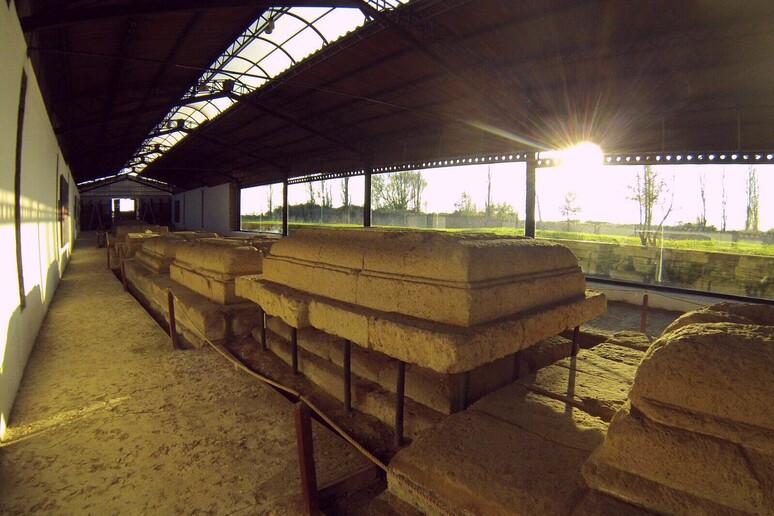The archaeological area of ancient
Lavinium is set to open for the first time to the public on
January 7, thanks to an agreement between the City of Pomezia,
the Superintendency for the Archeology of Art and Landscape of
Metropolitan Rome, the provinces of Viterbo and Southern
Etruria, and private donors.
The ancient city, located near the seaside village of Pratica
di Mare just south of Rome, was mythically founded by exiles
from Troy and was cited in the work of ancient Roman orator
Symmachus, ancient Greek historian Timaeus, and ancient Greek
poet Lycrophron.
Visitors will be able to tour both the Lavinium
Archaeological Museum as well as the archaeological site
unearthed in 1955 and 1956 by Roman topographer Ferdinando
Castagnoli, then-director of the University of La Sapienza's
Institute of Topography, and Roman archaeologist Lucos Cozza.
There the pair discovered an ancient burial mound 18 metres
in diameter surrounded by more than 60 precious objects
including vases, weapons, and items made of silver, bronze and
iron, all dating to the 7th century B.C.
The ruins revealed that the area reached its peak expansion
in the 6th century B.C.
The burial mound, or "tumulus", has come to be known as the
Heroon of Aeneas, after research attributed it to the
mythological legend of Aeneas, the Trojan hero of Virgil's
Aeneid.
Today the Heroon of Aeneas, the Sanctuary of Lavinium and its
thirteen altars is located inside the protected nature area
owned by the Roman noble Borghese family.
Superintendent Alfonsina Russo said visitors can see the 13
altars built out of tufa that were once red and were built
between the 6th and the 4th century BC, as well as a ceremonial
building and the remains of two kilns that produced votive
objects.
"They form an archaic sanctuary that brings visitors back
into the atmosphere and religious practices of a remote age
shortly after the founding of Rome," she said.
"Recent excavations have revealed a fourteenth altar, which
is now restored and included in the new visitor's route".
ALL RIGHTS RESERVED © Copyright ANSA











